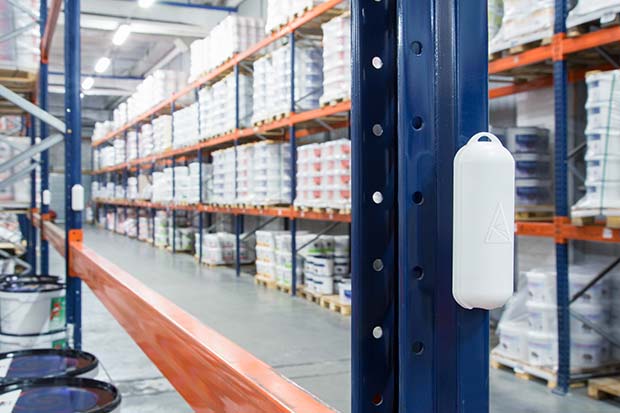Some companies tend to overlook the importance of appropriate climate within warehouses. It leads to unexpected expenses that occur when the stock is damaged. This article will give a short overview of why climate monitoring in warehouses is essential for storage, and how wireless monitoring systems can provide a solution.
 What damage can humidity cause?
What damage can humidity cause?
Optimal humidity levels in warehouses should be from 40-50% RH. Elevated humidity levels promote growth of mould on stored items, corrosion, and rust, it creates condensation on walls, ceiling, and floors, which creates conditions suitable for pests. It can also lead to additional insurance costs for mould and mildew claims from customers.
During the heat of the day, humidity can be around 30% or lower, but that can be misleading, because during the night the humidity can reach 70-80%, therefore 24/7 monitoring is required.
What is the relationship between temperature and humidity in climate control?
Relative humidity (RH) is directly related to the temperature of the air. If the temperature of the warehouse increases, the relative humidity will decrease and vice versa. Relative humidity doesn’t reflect how much water vapour is actually in the air, but, it tells how close the air is to being saturated.
That is why ideally humidity and temperature should be monitored simultaneously to have the full spectrum of the environmental data.
What is the most effective way to monitor humidity and temperature?
An efficient way of monitoring should be cost-effective, have easy installation process, not need frequent maintenance and provide 24/7 monitoring.
If that is what you are looking for, then wireless monitoring systems are the right solutions for your business! It’s an effective and reliable way to monitor temperature and humidity in warehouses without increasing costs or risking damage to the stored goods.
The solutions usually consist of a base station and wireless sensors that monitor the parameters. The devices are portable and energy efficient, the sensors can function up to 10 years without battery replacement.
The best solution on the market right now offers extensive 3km/1.9mi line-of-sight connectivity range between sensors and the base station. In addition to 24/7 monitoring, alarm notifications are sent when desirable thresholds have been exceeded.
An essential component of the wireless monitoring systems is data analysis tools. With the help of data analysis software, data can be accessed anywhere, anytime from any device. This helps businesses to stay alert and helps monitor various sites simultaneously. Thus such applications are suitable for companies in multiple locations or global presence.
The new technologies are taking the industry by storm and will be an essential competitive advantage in the future. To implement the future today and learn more about wireless monitoring solutions visit www.aranet.com !
ARANET




Comments are closed.